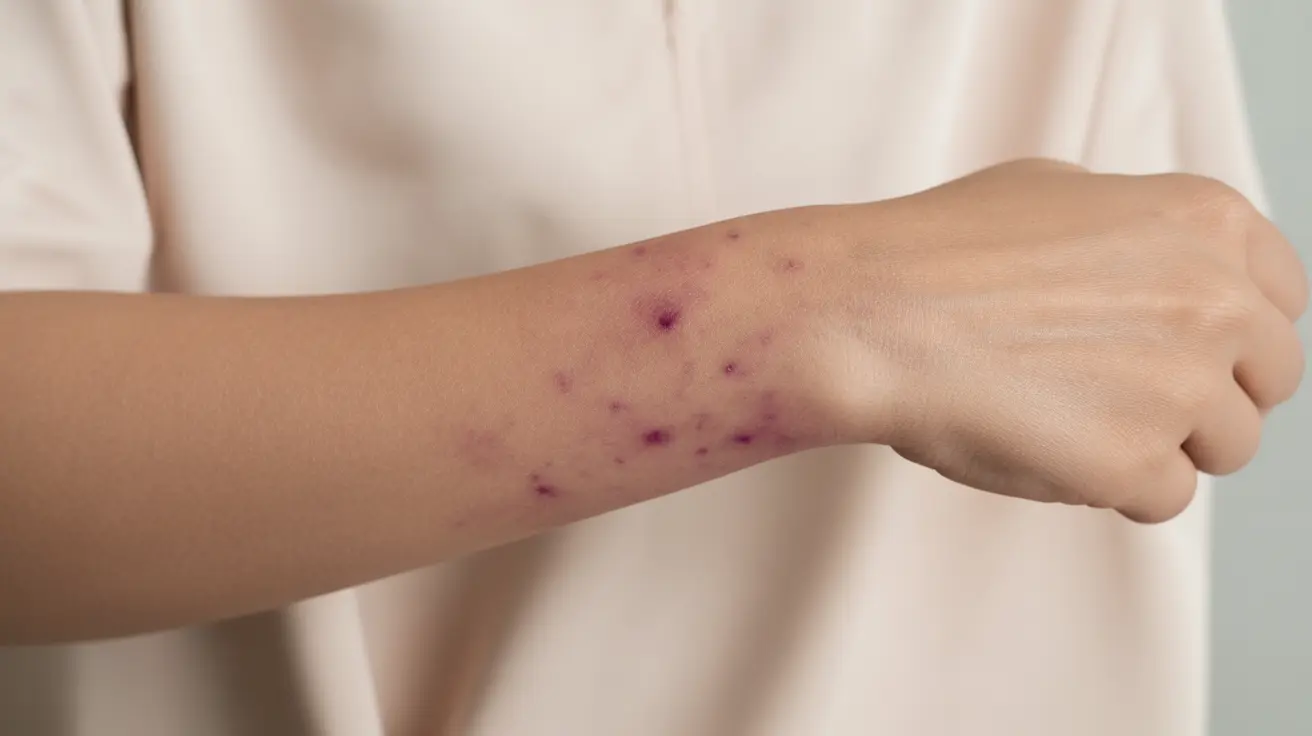Purpura rash is a distinctive skin condition characterized by purple-colored spots or patches that don't blanch (fade) when pressure is applied. This unique type of rash occurs when small blood vessels burst, allowing blood to pool under the skin. Understanding its causes, symptoms, and treatment options is crucial for proper management and knowing when to seek medical attention.
While purpura rash can affect people of all ages, its underlying causes and severity can vary significantly. Some cases may resolve on their own, while others might indicate a more serious medical condition requiring immediate attention. Let's explore this condition in detail to help you better understand its implications and management strategies.
Types of Purpura Rash
Purpura rash can be classified into two main categories based on their underlying causes:
Thrombocytopenic Purpura
This type occurs when there's a low platelet count in the blood, affecting the body's ability to form clots. It can be caused by autoimmune conditions, medications, or other underlying health issues.
Nonthrombocytopenic Purpura
This form develops despite normal platelet levels and is often related to blood vessel inflammation or damage. It can be triggered by infections, certain medications, or vascular disorders.
Identifying Symptoms and Warning Signs
The characteristic signs of purpura rash include:
- Purple, red, or brown-colored spots on the skin
- Spots that don't fade when pressed
- Lesions ranging from small dots to larger patches
- Possible accompanying symptoms like joint pain or fever
- Spots commonly appearing on the lower legs and feet
These symptoms may develop suddenly or gradually, depending on the underlying cause. The appearance and pattern of the rash can often provide important clues about its origin.
Diagnosis and Medical Evaluation
Healthcare providers use several methods to diagnose purpura rash and its underlying cause:
- Physical examination of the rash
- Complete blood count to check platelet levels
- Coagulation tests to assess blood clotting
- Skin biopsy in some cases
- Additional testing based on suspected underlying conditions
Treatment Approaches
Treatment for purpura rash varies depending on its cause and severity:
Medical Interventions
Healthcare providers may recommend:
- Corticosteroids to reduce inflammation
- Immunosuppressive medications for autoimmune causes
- Platelet transfusions in severe cases
- Treatment of underlying infections or conditions
Self-Care Measures
Several self-care strategies can help manage symptoms:
- Protecting affected skin from injury
- Avoiding medications that affect blood clotting
- Maintaining good skin hygiene
- Following a healthy diet rich in vitamins C and K
- Getting adequate rest during recovery
Prevention and Long-term Management
While not all cases of purpura rash can be prevented, certain measures can help reduce risk:
- Regular medical check-ups
- Avoiding trigger medications when identified
- Maintaining a healthy immune system
- Prompt treatment of underlying conditions
- Protection from excessive sun exposure
Frequently Asked Questions
1. What causes purpura rash and how can I tell if it is thrombocytopenic or nonthrombocytopenic? Thrombocytopenic purpura is characterized by low platelet counts and can be identified through blood tests. Nonthrombocytopenic purpura occurs with normal platelet levels and is often related to blood vessel inflammation. Only a healthcare provider can make this distinction through proper testing.
2. What are the common symptoms of a purpura rash and when should I see a doctor? Common symptoms include non-blanching purple spots on the skin. Seek immediate medical attention if the rash appears suddenly, is accompanied by fever or severe pain, or if you notice bleeding from other sites.
3. How is purpura rash diagnosed by healthcare providers? Diagnosis typically involves physical examination, blood tests to check platelet counts, coagulation studies, and sometimes skin biopsies. Additional tests may be ordered based on suspected underlying causes.
4. What treatment options are available for purpura rash based on its underlying cause? Treatment options range from monitoring and self-care to medical interventions like corticosteroids, immunosuppressants, or platelet transfusions, depending on the cause and severity of the condition.
5. Can purpura rash go away on its own, and what self-care measures can help manage it? Some cases of purpura rash may resolve spontaneously, particularly if caused by temporary factors. Self-care measures include protecting the skin from injury, maintaining good hygiene, and following a healthy diet. However, medical evaluation is important to determine if treatment is necessary.




